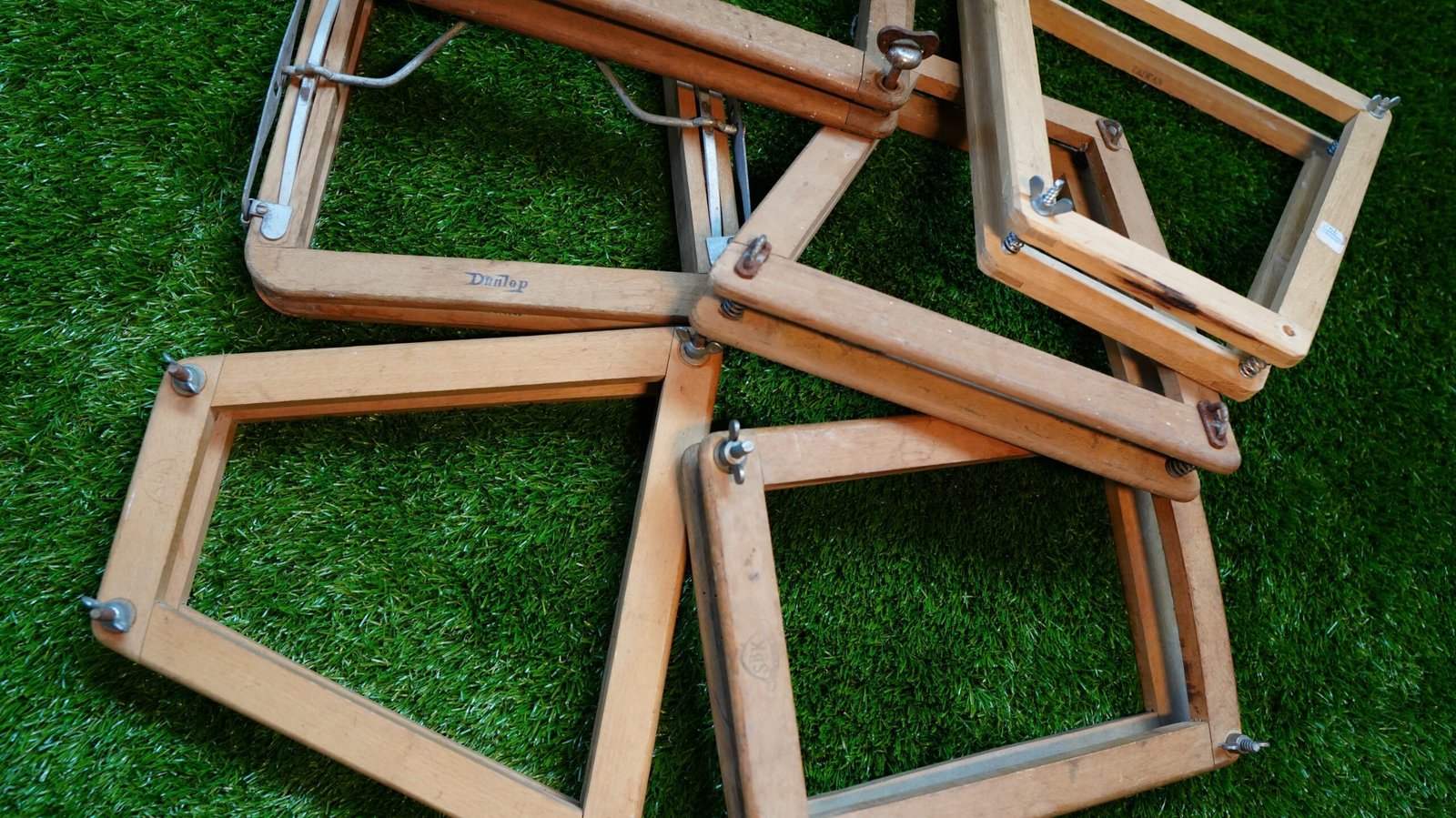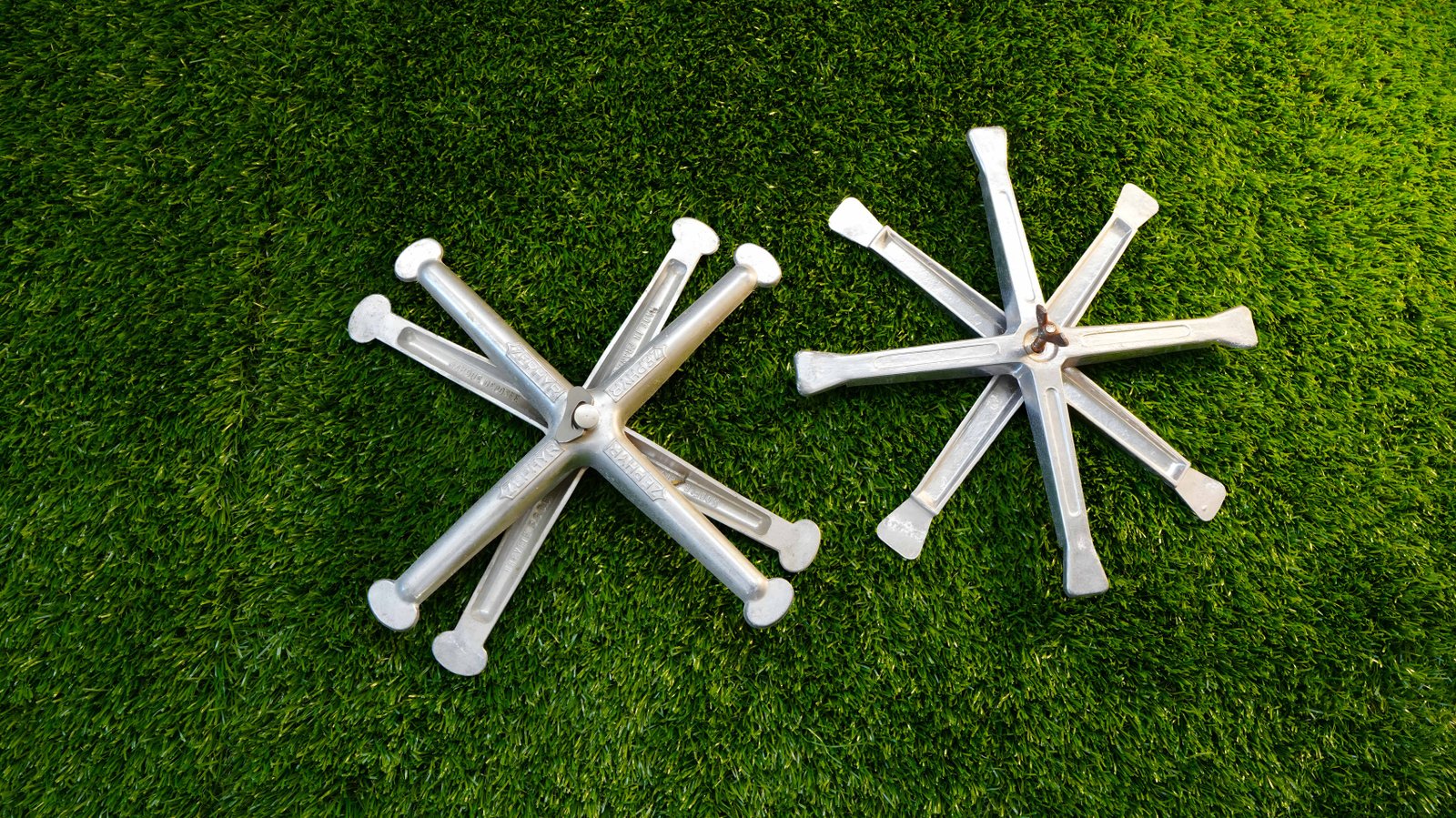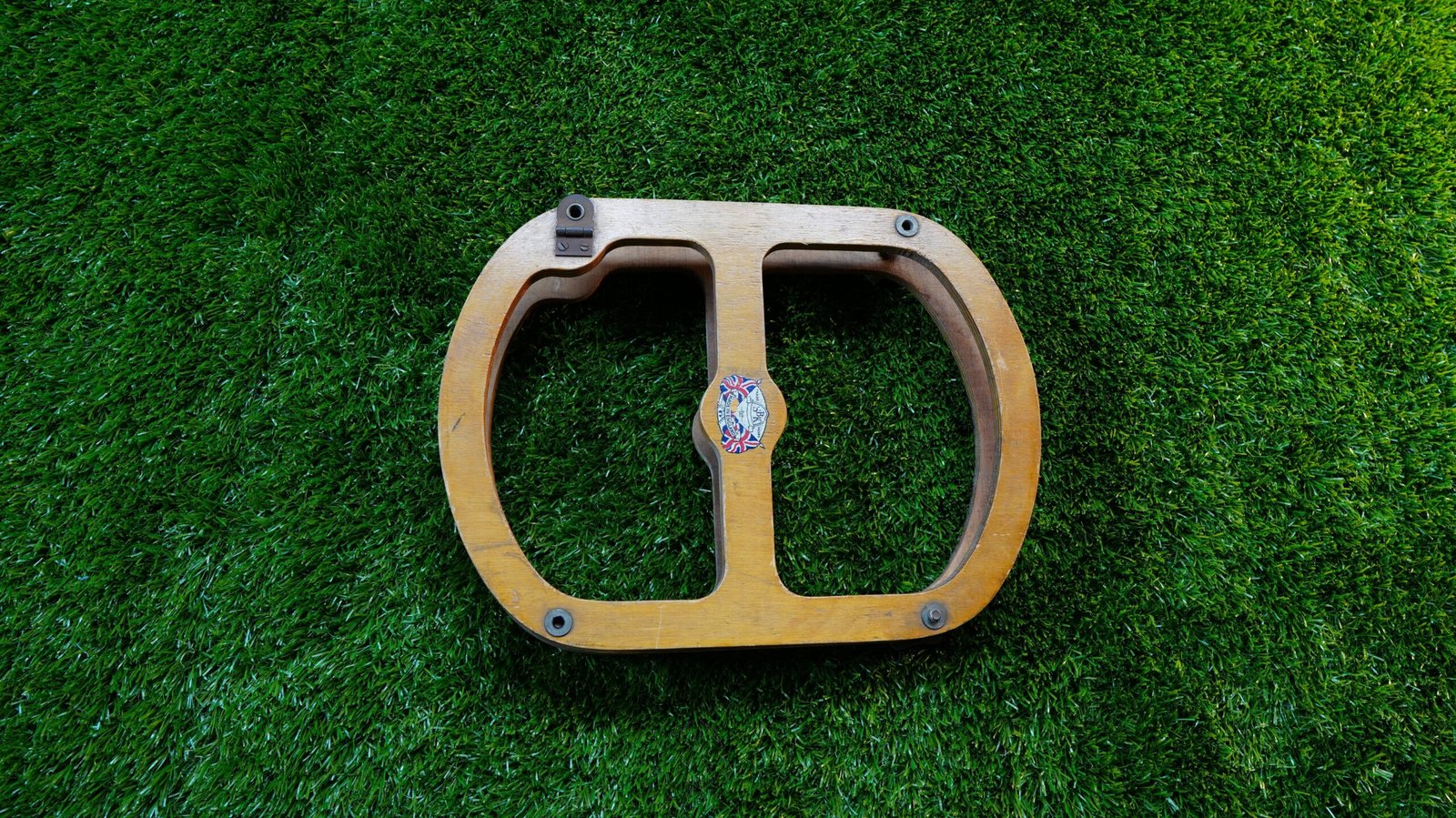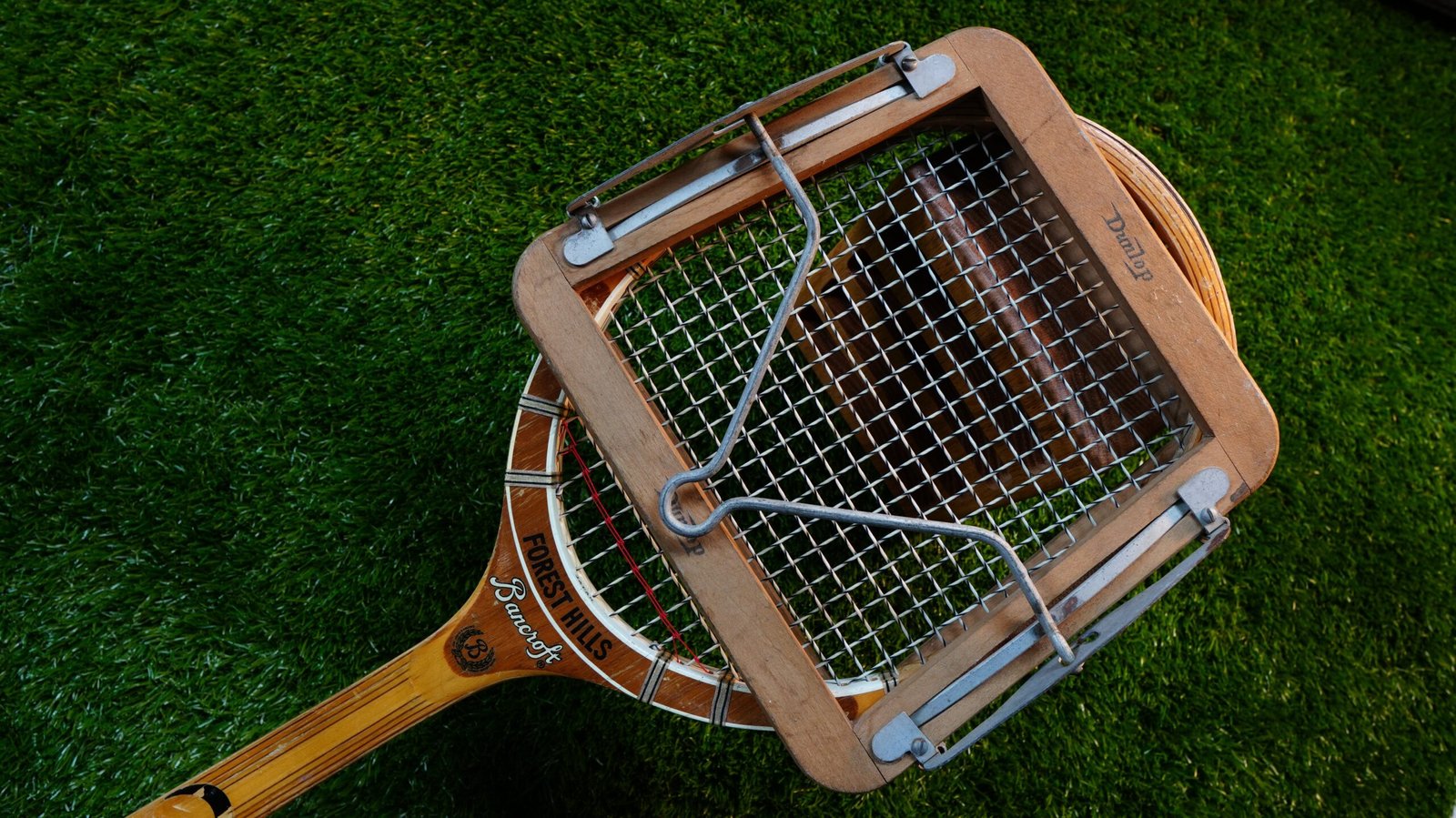Wood is a natural material that adapts to pressure with time. Given that Bjorn Borg would string his racket with 60lbs string tension something would have to give. Even well made racket heads would warp if kept under pressure for years. In fact they would warp in days if left in damp or wet conditions and not completely dried. And sadly once warped, they are almost impossible to unwarp.
Racket presses were essential for longevity of the wooden frame and you will find many rackets have the caution printed on the butt cap, ‘ when not in use store in a press’. Most presses were made for one racket ‘but some big clubs made custom presses for multiple rackets for club players and many touring players had shapely 4-6 racket presses featuring polished wood and large brass tightening screws.
Early Development: Racket presses emerged soon after lawn tennis rackets were introduced to prevent wooden rackets from distorting in wet conditions. Early models, dating back to the 1870s, were made of solid timber and could hold multiple rackets.
Materials and Design: Most were soft woods such as pine. Sometimes hard woods like walnut was used. Over time, designs evolved from wood to metals and a few plastics. Early presses were often made from mahogany and brass, while later versions incorporated aluminum and other modern materials. In 1960 Zephyr in France made a clever art deco star design from Aluminum
Notable Models and Makers (Chronologically):
- Henry Malings (1870s): Made of mahogany and brass, designed for smaller-headed rackets.
- T H Prosser & Son (1870s): Six racket press for smaller, lop-sided rackets.
- F H Ayres (1880-1890s): Known for multiple solid wood presses and patented central press designs.
- Slazengers (1890-1930s): Produced multiple presses, including a 24 racket club press and various trapeze-shaped models.
- Various Makers (1900-1930s): Numerous presses from companies like Wisdens, G G Bussey & Co., and unknown makers, featuring innovations such as internal springs, brass fittings, and wing nuts for uniform pressure.
- Dunlop (1920s-1982): Known for wood with aluminum springs, including the patented trapeze-shaped designs by Spencer Flower.
- Spalding (1950s): Introduced the “National” press with a central lever mechanism.
- Japanese Makers (1950s): Produced wooden presses with wingnuts, often more brittle due to cheaper materials.
- Zephyr (1960s): Produced aluminium presses with felt pads (usually lost!) which had a central clamping screw.










